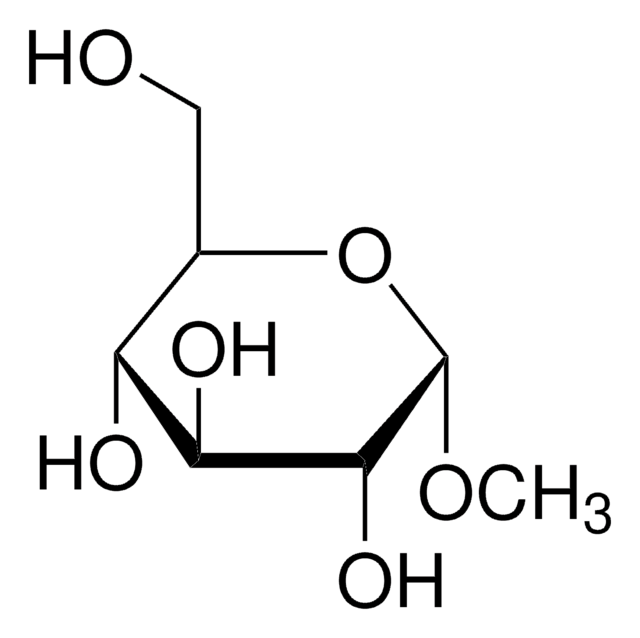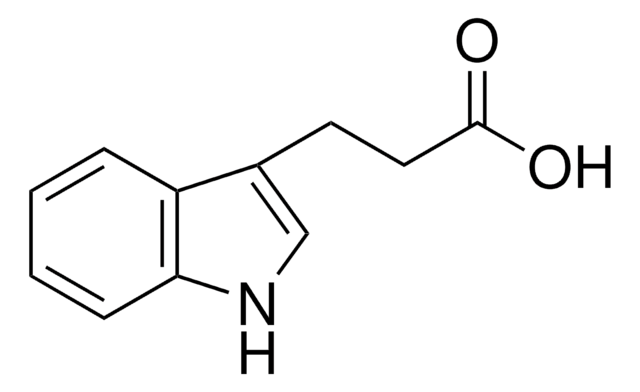66940
Methyl α-D-glucopyranoside
≥99.0%, suitable for microbiology
Sinónimos:
alpha-Methyl D-glucose ether, Methyl glucose, Methyl alpha-D-glucoside, Methyl glucopyranoside, Methyl alpha-D-glucose, Methyl pyranoside, Methyl α-D-glucoside
About This Item
Productos recomendados
Quality Level
assay
≥99.0% (sum of enantiomers, HPLC)
≥99.0%
form
crystalline powder
optical activity
[α]20/D +157±3°, c = 10% in H2O
packaging
pkg of 100 g
storage condition
(Keep container tightly closed in a dry and well-ventilated place.)
color
colorless
mp
165-169 °C
application(s)
microbiology
SMILES string
CO[C@H]1O[C@H](CO)[C@@H](O)[C@H](O)[C@H]1O
InChI
1S/C7H14O6/c1-12-7-6(11)5(10)4(9)3(2-8)13-7/h3-11H,2H2,1H3/t3-,4-,5+,6-,7+/m1/s1
InChI key
HOVAGTYPODGVJG-ZFYZTMLRSA-N
¿Está buscando productos similares? Visita Guía de comparación de productos
General description
Application
Storage Class
11 - Combustible Solids
wgk_germany
WGK 1
flash_point_f
Not applicable
flash_point_c
Not applicable
ppe
Eyeshields, Gloves, type N95 (US)
Elija entre una de las versiones más recientes:
¿Ya tiene este producto?
Encuentre la documentación para los productos que ha comprado recientemente en la Biblioteca de documentos.
Los clientes también vieron
Artículos
Culture media provides a habitat with suitable nutrients, energy sources, and certain environmental conditions for the growth of microorganisms. The components of the culture media range from simple sugars to peptones, salts, antibiotics, and complex indicators.
Nuestro equipo de científicos tiene experiencia en todas las áreas de investigación: Ciencias de la vida, Ciencia de los materiales, Síntesis química, Cromatografía, Analítica y muchas otras.
Póngase en contacto con el Servicio técnico








